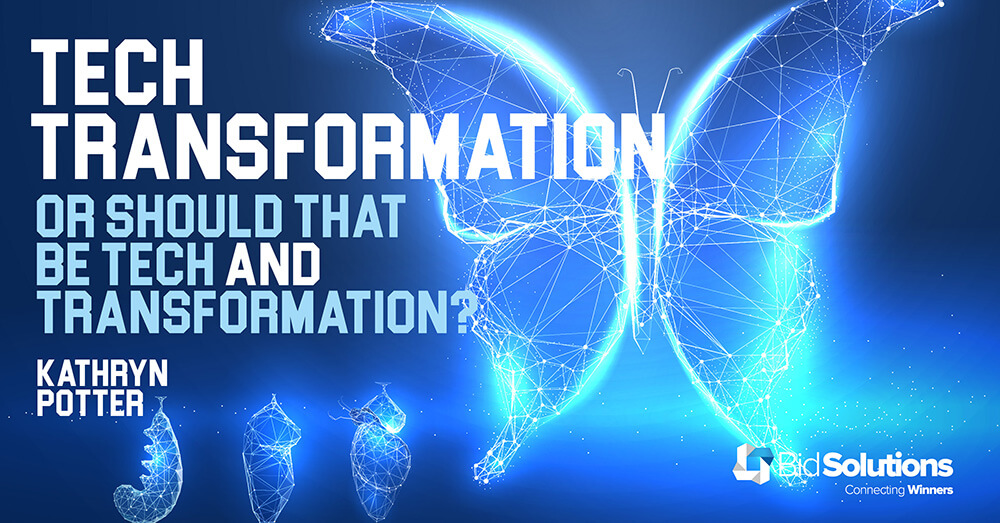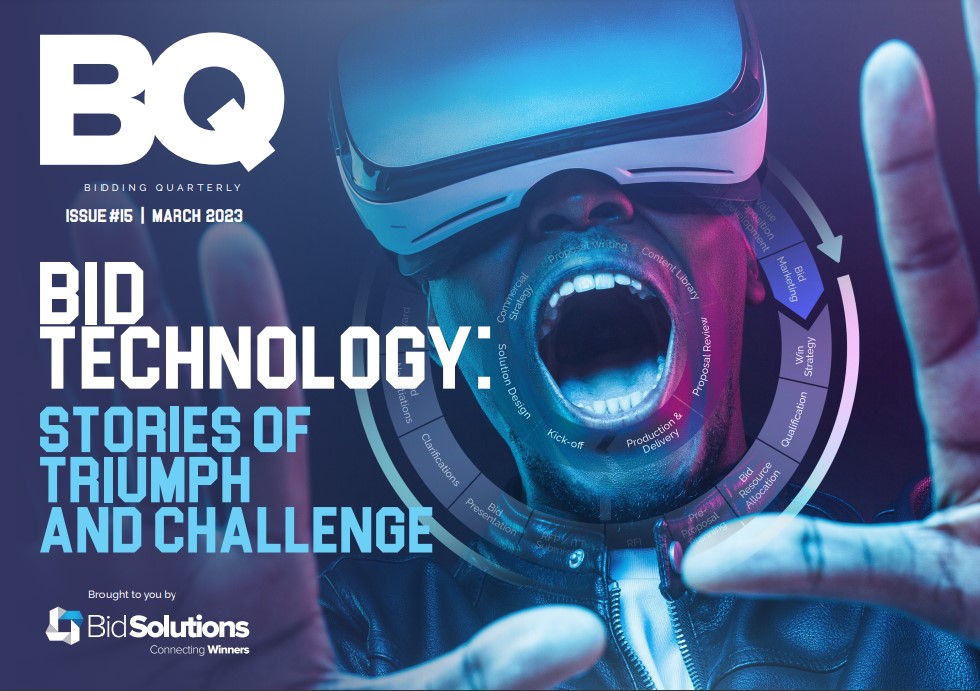
Automation, AI, Content Libraries, Search Engines, Portals, Intranet, Word, InDesign… It’s all technology and it all plays a part in the world of bids and proposals. The challenge is not what software or solution to buy or implement, it’s actually knowing why you want it, what you want to achieve in implementing it and understanding the transformation activities you need to undertake to realise the benefits.
There is a pretty apt saying which I think applies to each step of the process: “Garbage in, garbage out” (or GIGO). If you don’t know what you actually want to achieve by implementing a solution you will never realise what it can do for you. At the same time, implementing a solution isn’t as simple as buying the software, speaking to the provider’s project manager/salesperson, installing it and then telling everyone they need to use it or else.
‘Change Management’ and ‘Transformation’ pop up the more people I speak to and the more I reflect on organisations I have worked with who have considered and/or implemented automation or other technology to streamline and enhance their bid processes. Taking those phrases further, it’s clear that very often no one has asked HOW the solution/software will impact the way people work, and WHAT will be done to address this. This is a dangerous situation. If you don’t address HOW it will affect people and a new way of working, you run a very real risk people will revert to their old ways.
I’ve seen organisations implement solutions because they wanted to be more efficient, have better looking proposals, save time, save headcount, increase win rates, and be able to find the information they knew they had. In each instance, the success of the solution wasn’t related to how good it was but to how well the implementation was managed, specifically the transformation aspects of the project.
To realise the benefits of any solution – whether deciding to implement a centralised content library using SharePoint and the Intranet or a complete proposal automation solution that will interface with your sales CRM – you need to ask the following questions, and be really honest about the answers.
- WHAT do we want to achieve for our bid team by implementing XYZ solution? A centralised library? Total automation? Knowledge management? Better output in terms of proposal design? More wins? A smaller more efficient bid team? Greater collaboration? There are a whole variety of options here.
- WHICH solution (or combination of solutions) will give us the result we are looking for? It doesn’t need to be just one product/tool.
- WILL the cost of the solution (annual subscriptions/licencing/bolt on options/implementation cost) actually give us tangible ROI based on WHAT we want to achieve for our team/organisation? What are the hidden costs, e.g., do we need to consider having a knowledge manager/administrator to keep it working optimally? What training is needed, what will that cost (in terms of work days lost and cost of training)?
- WHY is Solution A more appealing than Solution B? Cost is a factor but it shouldn’t be the only one.
And the most important question, which I truly think is largely forgotten – HOW will this impact the way we work?
As an analogy – my family like tasty bread for sandwiches and we go through a lot of bread. I did some research on hand baking vs bread maker. Ingredient costs are similar; labour isn’t (man vs machine). I speak to a friend who swears by her bread maker, tells me how fantastic it is and how it’s revolutionised school lunches. I’m sold – automation is the future. However, no one told me about the transformation I would need to make to my way of working to achieve this – that my family can go through a fresh-baked loaf a day, that clean-up is a nuisance if the mix is slightly out, the timer function isn’t as great as I thought it would be, fresh flour is essential. I wasn’t fully aware of the changes I’d need to make my behaviours, e.g., the way I shop and remembering to put the mix in on a timer before bedtime. So I have a tool that’s fabulous and does the job but isn’t providing what I want unless I implement some transformation activities.
It’s essential to understand what you need to communicate across your team, whose buy-in you need (and no, it’s not just the CFO and the head of bids), how it will impact the way you work, and what processes need to be adopted/adapted to make it deliver what you want.
Brainstorm with your team what you want to achieve, what the team actually needs to perform better and be more successful. Ask a lot of questions about what each solution can do and the work required from you (your team) to make it a success. Design a transformation programme to meet the requirements to make it work.
Understand whether your team are happy to move away from a spreadsheet/Kanban board to track response progress. Are they happy to have to click into a separate portal/tool that’s not like Word to create the responses? How much library curation do you actually need to make the ‘best answer match’ option a real ‘best answer match’? Does the export function deliver the finished product you thought it would? What will make them stop using the new solution?
It’s not about the tech, it’s about the transformation that accompanies it.
This article was written by Kathryn Potter.
Kathryn’s experience in bid writing covers sectors as varied as IT outsourcing to financial services, security services to reprographics and construction and rail. She sees content as the cornerstone of proposal development and understands that no matter what, it needs to be relevant and up-to-date.

